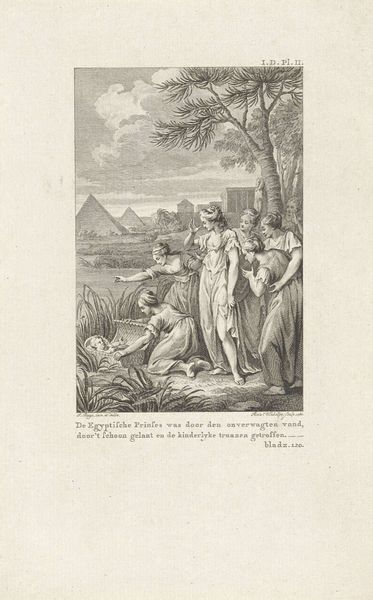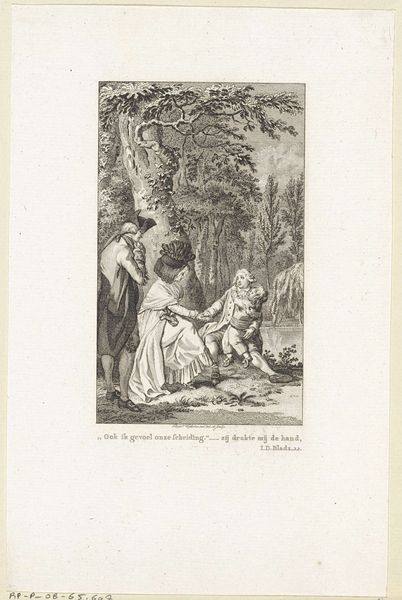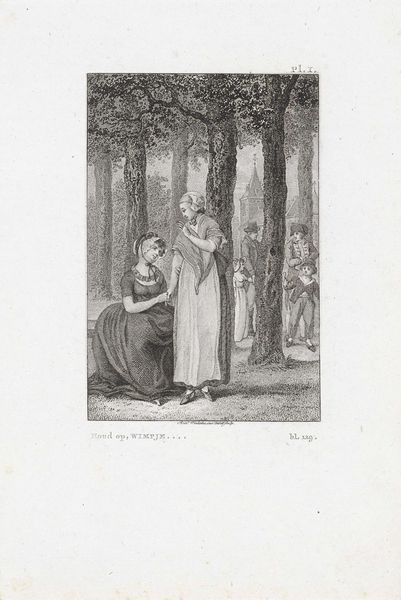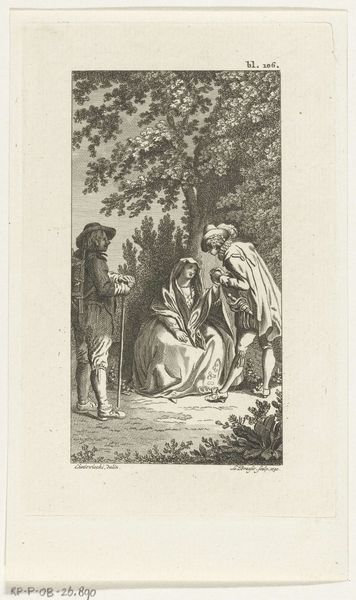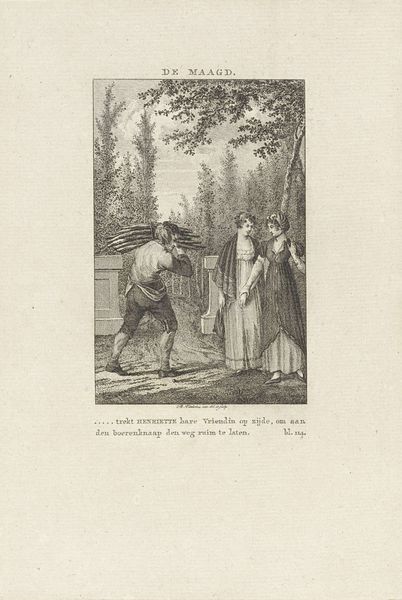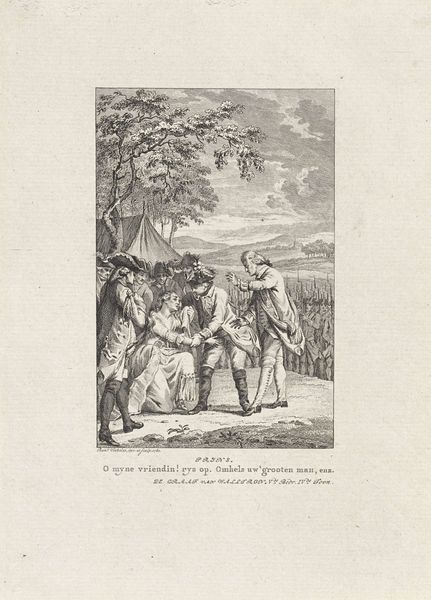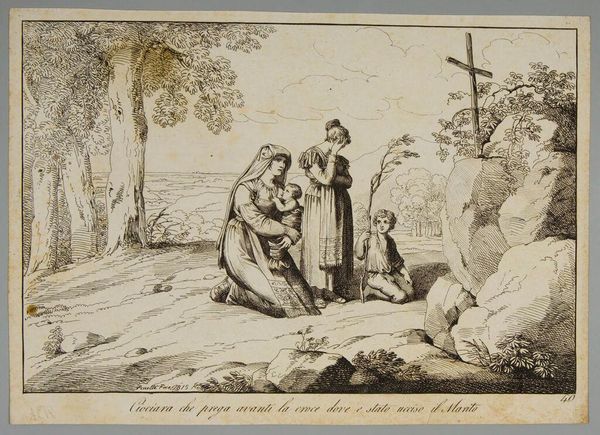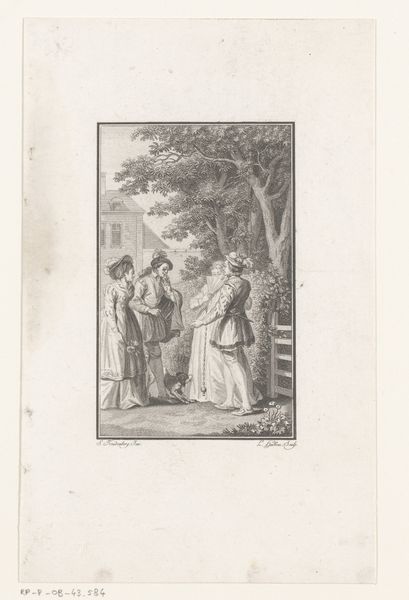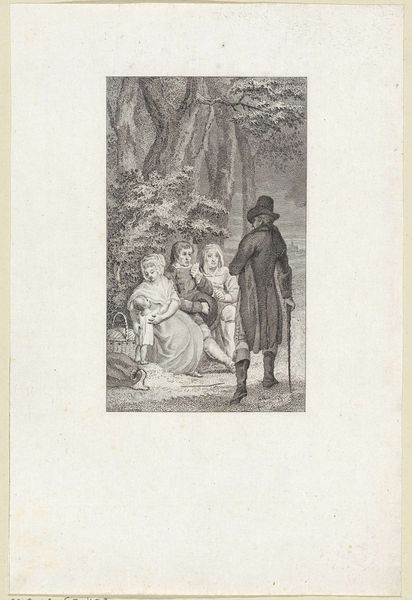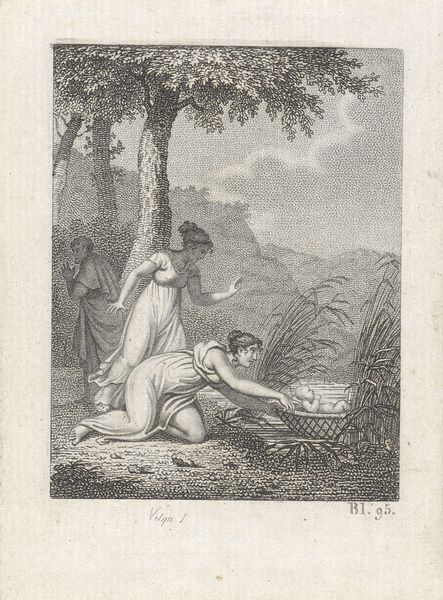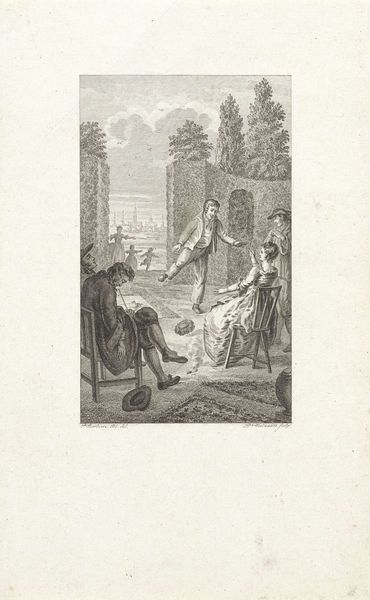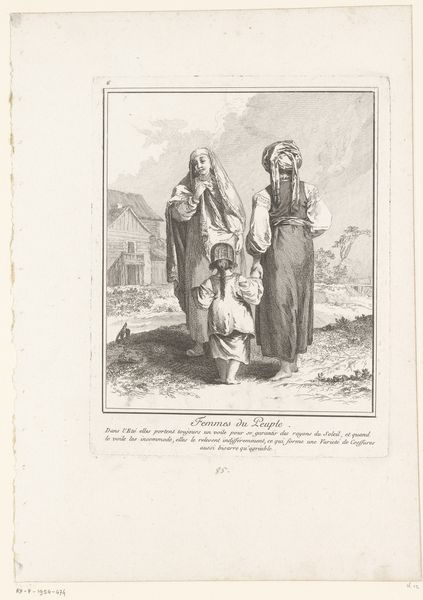
Dimensions: height 230 mm, width 146 mm
Copyright: Rijks Museum: Open Domain
Editor: Here we have Reinier Vinkeles’s 1777 engraving, "Allegory with Christ as Friendship and Judas as Deceit," housed in the Rijksmuseum. I’m immediately struck by the stark contrast between the figures bathed in light on the left, and the shadowy figures lurking to the right. What can you tell us about the symbolism at play here? Curator: This engraving, rich in baroque sensibilities and allegorical language, presents us with potent symbols deeply embedded in our cultural consciousness. Do you notice the figure of Christ reaching out? It seems as though he is trying to pull someone from out of a group on the right. Editor: Yes, and that group seems less receptive to him than the mother and children at left. Is it as simple as right representing evil and left good? Curator: Not necessarily simple, but there is an intended contrast. Note the snake slithering toward those innocent children; it represents betrayal, directly alluding to Judas and his deception. This contrasts with Christ extending his hand in friendship, offering salvation. Consider the tree looming overhead. What do trees generally represent in Western iconography? Editor: Life, knowledge… a connection between heaven and earth. Curator: Precisely. Here, it serves as a visual metaphor, solidifying the dichotomy between divine guidance and earthly betrayal. Vinkeles draws on our collective understanding of these symbols to enhance the print’s emotional and intellectual weight. The use of chiaroscuro heightens the drama, reinforcing a strong visual and emotional divide that emphasizes the tragic cost of betrayal. The intent being to instruct a moral lesson and to remember cultural continuity. Editor: That's fascinating. I never would have connected the snake so readily, but you made its meaning so much clearer with the artist’s use of light, and tree symbols. Curator: Indeed. By examining the visual symbols embedded in artwork like this, we unearth a history that still profoundly resonates. The ability of certain figures to represent good and bad continues even today. Editor: Thank you! I feel like I have learned ways to identify iconographic intention in different contexts.
Comments
No comments
Be the first to comment and join the conversation on the ultimate creative platform.
